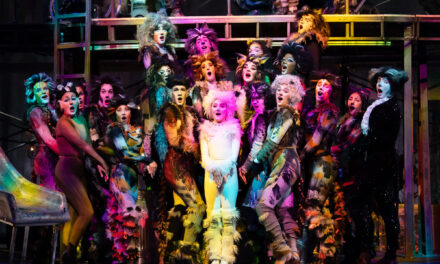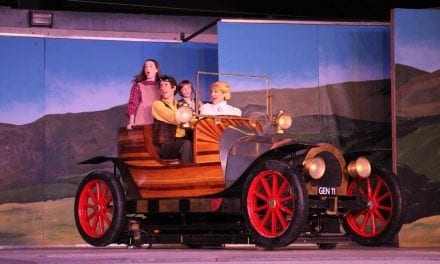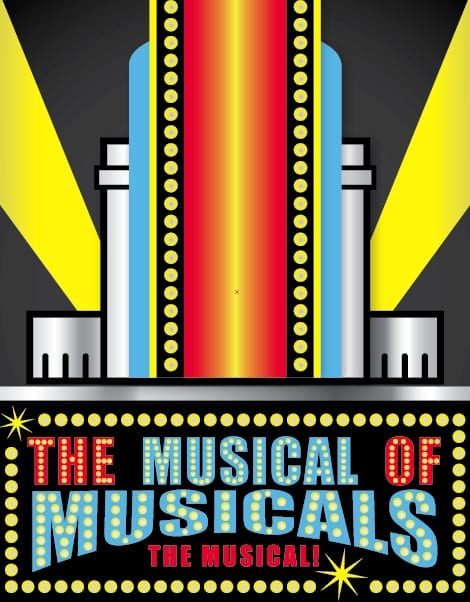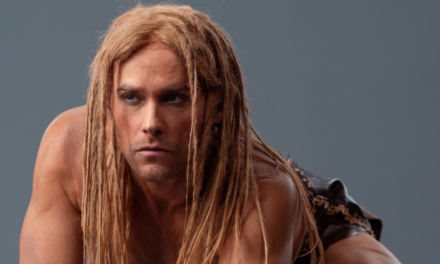HURRICANE — Stepping into the auditorium at the Hurricane Fine Arts Center on a recent Friday night, I was immediately transported. Against an auditory backdrop of Gregorian chants, the towering, textured walls of Notre Dame loomed across the proscenium stage, beckoning all to find sanctuary there. Two enormous bells hung above the space, offering a clear indication — in case it wasn’t already clear by the oversized bell and signage in the foyer — that the musical version of Victor Hugo’s The Hunchback of Notre Dame was about to unfold.
Addressing themes of prejudice, love, and loyalty, The Hunchback of Notre Dame tells the story of Quasimodo, a deformed child forced to live in the bell tower of the famous Notre Dame Cathedral. His uncle, Archdeacon Claude Frollo, claims he is trying to protect the unfortunate child, but treats him poorly as a result of his Romani heritage. Frollo’s prejudice is further revealed when another Roma street dancer named Esmerelda, stirs within him a passion he cannot control. Meanwhile, Quasimodo develops an innocent love for the same Esmerelda whose affections lie with the cathedral soldier, Phoebus. This web of lust and love sets the stage for heartbreak in multiple forms.
For those who have yet to experience this particular tale, it is a layered tragedy and nuanced characters, the likes of which only an author like Victor Hugo can provide. The musical production is adapted from the 1996 Disney film, and adds even more beauty and sadness to the story, due to the music by Alan Menken and the lyrics by Stephen Schwartz. However, in the hands of director Kyle Myrick and an extremely capable cast, this story is brought to new heights. Hurricane Theatrical’s version is every bit the moving, thought-provoking, tragic tale one would hope it to be.
Serving as the main narrator and lead Romani wanderer, (referred to in the text by “Gypsy”), Day Carpenter opens the storyline beautifully in his role as Clopin. His strong vocals on “Olim” and “The Bells of Notre Dame” set a high level of expectation, a standard to which the rest of the cast seems to effortlessly rise; so effortlessly, in fact, it was difficult to tell if the chorus is singing along to a backing track or not. There are times the voices are so rich — including a remarkably high soprano on the closing number — that it seems almost too good to be true for an amateur cast of this size. Whether using a backing track to support their cast or not, the result is a wonderful added fullness of sound.
As the title character in the story, Brad Serage is every bit the embodiment of hunchback Quasimodo. With his crumpled frame, gnarled wig, and raspy speaking voice, it is easy to believe Serage as the mistreated man who longs for a life beyond the walls of the bell tower. As much as Serage manages to sell his speaking voice as weak and pitiful, there is no mistaking the strength and skill that emerged when Serage opens his mouth to sing. The longing, hopeful strains of “Out There” fill the space, and hint at the many other great vocal contributions to come, such as the sweet exchange between Quasimodo and Esmerelda in “Top of the World.”
Sharing those sweet notes with Quasimodo was Haley-Shea Benoit in the role of the beautiful and kind-hearted Esmerelda. Benoit’s sweeping version of “God Help the Outcasts” served as one of the highlights of the show, closely followed by her duet with Phoebus (played by Jaiden Scott) in “Someday.” While Benoit’s vocals set her apart onstage, the choreography assigned to her character feels rather rudimentary. While this decision by choreographer Kenzie Harts appears to conflict with the script’s assertion of Esmerelda’s dancing prowess, Benoit makes up for the lack of dancing with supreme vocals and heartfelt acting.
Complimentary to the main actors, the ensemble brings a bright energy to the stage. This energy is contagious but sometimes a little distracting. For example, during the “King of Fools” scene, the dialogue is difficult to understand, getting lost in the chaos of the ensemble as they attack Quasimodo. While the ensemble shines brightly, they wisely balance their brilliance as the show continues.
Stepping into the shoes of one of the most complicated characters of the show, Caleb Christensen does a fantastic job as the self-righteous villain, Claude Frollo. Christensen’s ability to go back and forth between anger and calm suggests a keen strength in his acting skills. Additionally, his rich bass vocals rumble out some of the more spine-tingling numbers of the night, including his portion of “Out There” and the revealing, “Hellfire.” However, the beautiful deepness of his voice is occasionally a doubled-edged sword when it meets the scenic design.
I commend Nathan Merrill, in charge of scenic construction, for turning the Hurricane City Fine Arts Center into an awe-inspiring version of the Notre Dame Cathedral. The shape of the stage, combined with the execution of the set design, however, means that much of the theatrical action took place deep in the center of the stage, far from the audience, and flanked by the enormous bell towers. On occasion, this created some acoustical problems. For Christensen as Frollo, for example, a combination of a lack of enunciation on his part, and his placement near the back of the stage made it difficult to understand some of the key lyrics of his songs. Anyone unfamiliar with the score may have a difficult time grasping key plot points because the words don’t consistently make their way out to the audience. Fortunately, this issue was only noticeable a few times when I saw the show, and the vast majority of the night’s music and vocals swell throughout the space without issue.
Tackling The Hunchback of Notre Dame as a community theater is not for the faint of heart, but Myrick and his cast and crew pull it off beautifully. Myrick is known for executing grand productions, embracing talented actors, and creating realistic set designs, and this latest production is no exception.





